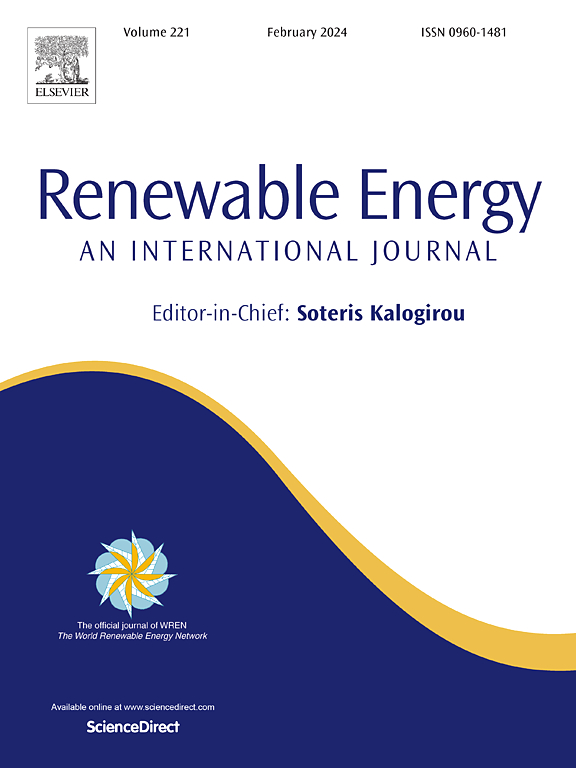Distributed biomass pyrolysis equipment applied in the field of yard waste treatment: equipment design, recycling of by-products, physico-chemical analysis of products, economic efficiency analysis
IF 9.1
1区 工程技术
Q1 ENERGY & FUELS
引用次数: 0
Abstract
To convert yard wastes including bamboo waste and wood waste into solid biofuel, a distributed biomass pyrolysis equipment was designed with the characteristics of recovering bio-tar, waste heat utilization and high efficiency in this research. Hydroxypropyl methyl cellulose (HPMC) and recovered bio-tar were utilized as a composite binder for molded charcoal. The mechanical, combustion, ash fusion characteristics and economics of molded charcoal were evaluated. The optimized operating conditions for the equipment included a pyrolysis temperature of 400 °C, a heating rate of 2.5 °C/min, and a holding time of 30 min. The yield of bamboo charcoal was 36.37 %, while the yield of wood charcoal was 34.20 %. The optimum mass ratio of HPMC to bio-tar was 3:1. At this ratio, the HHV of molded wood charcoal was 25.47 MJ/kg, with a compressive strength of 172.25 N/cm. Similarly, the HHV of molded bamboo charcoal was 25.88 MJ/kg, with a compressive strength of 143.38 N/cm. The minimum selling price (MSP) of molded charcoal was 861.96 USD/t with a profit of 5.14 USD/t. Consumable expenditure, labor cost, and yard waste cost were the major factors influencing the MSP of molded charcoal. These findings will provide scientific guidance for value-added utilization of yard wastes.

分布式生物质热解设备在堆场垃圾处理领域的应用:设备设计、副产品回收利用、产品理化分析、经济效益分析
为了将竹木废弃物转化为固体生物燃料,本研究设计了一种具有回收生物焦油、余热利用和高效的分布式生物质热解设备。羟丙基甲基纤维素(HPMC)和回收的生物焦油作为复合粘合剂用于成型木炭。对成型炭的力学特性、燃烧特性、灰熔融特性及经济性进行了评价。优化后的设备操作条件为热解温度400℃,升温速率2.5℃/min,保温时间30 min,竹炭得率为36.37%,木炭得率为34.20%。HPMC与生物焦油的最佳质量比为3:1。在此配比下,成型木炭的HHV为25.47 MJ/kg,抗压强度为172.25 N/cm。竹炭成型后的HHV为25.88 MJ/kg,抗压强度为143.38 N/cm。成型木炭的最低售价(MSP)为861.96美元/吨,利润为5.14美元/吨。易耗品支出、人工成本和废弃物成本是影响成型木炭MSP的主要因素。研究结果将为堆场废弃物的增值利用提供科学指导。
本文章由计算机程序翻译,如有差异,请以英文原文为准。
求助全文
约1分钟内获得全文
求助全文
来源期刊

Renewable Energy
工程技术-能源与燃料
CiteScore
18.40
自引率
9.20%
发文量
1955
审稿时长
6.6 months
期刊介绍:
Renewable Energy journal is dedicated to advancing knowledge and disseminating insights on various topics and technologies within renewable energy systems and components. Our mission is to support researchers, engineers, economists, manufacturers, NGOs, associations, and societies in staying updated on new developments in their respective fields and applying alternative energy solutions to current practices.
As an international, multidisciplinary journal in renewable energy engineering and research, we strive to be a premier peer-reviewed platform and a trusted source of original research and reviews in the field of renewable energy. Join us in our endeavor to drive innovation and progress in sustainable energy solutions.
 求助内容:
求助内容: 应助结果提醒方式:
应助结果提醒方式:


